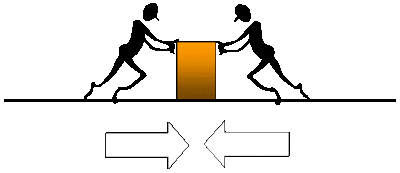Toward a Simple Model of Price Behavior
Two simple forces behind all price patterns and price movements.
[dc]F[/dc]or readers who may not be familiar with my work, I am a quantitative discretionary trader. What this means is that I am a discretionary trader, but everything I do is subject to rigorous, quantitative, and statistical verification. Over the years, I have accumulated a lot of statistical evidence for what works and what does not work in the market, and the results may be surprising. (As an interesting aside, I published a 480 page book last year. The book I almost published was over 900 pages, and the "missing" 450 pages were mostly in-depth statistical analysis of the deep workings of price action and market structure. I'll be sharing some of that information in this blog over the coming months.) I'm sometimes accused of being overly negative, as the preponderance of statistical evidence strongly contradicts many of the accepted tools of technical analysis such as moving averages, candlestick patterns, and Fibonacci ratios. Many traders find this message challenging, but many people would rather have confirmation rather than a good hard look at the realities of what works and what does not. In many ways, I'm nearly a market nihilist, as I believe (based on my experience and research) that nearly everything everyone thinks works, actually does not.
The point of this work is not to disparage anything anyone does; the point is to save your time and money. We'll dig into some of my research in-depth in future posts, but today I want to share a model of market behavior that I've found very useful. Though this is theoretical in the sense that I do not actually know these two forces actually exist as "things" in the marketplace, the model works. It is supported by rigorous statistical research, and, even more importantly, it has proven itself in actual trading for many years.

The concept is simple. Imagine, for a moment, that there are two forces in the market: Mean reversion, the tendency for large moves to be reversed in part or completely, and Momentum, the tendency for large moves to lead to further moves in the same direction. When the forces are in balance, and they usually are, markets will move more or less randomly. Price will move up and down in ways that look a lot like a random walk. Future prices and price direction will be unpredictable, and there is no technical reason for having a position. We refer to this as a market in equilibrium, and these are the types of markets we try to actively avoid. However, there are other points where one force predominates, though there is always a balance. In trends, momentum lets with-trend thrusts lead to further thrusts in the same direction, though eventually mean reversion overtakes them and the market rolls over into a pullback. (These concepts are timeframe dependant.) At other times, mean reversion will predominate and large moves can be faded. The question of technical trading now becomes this: "is it possible to identify patterns that show, in advance, when one force is likely to be stronger than the other?" If so, then we have a reason for taking a position, putting risk in the market, and the possibility of harvesting trading profits from markets that are otherwise random and unpredictable. Fortunately, the answer to that question is yes.
That's all there is to the model; it is so simple that it's easy to overlook the importance and usefulness of such a simple framework. These forces shape everything from traditional chart patterns to long-term trends to ultra short-term HFT behavior. There are many nuances here that may not be appreciated in traditional technical analysis—for instance, the balance of momentum and mean reversion are different in different asset classes and different timeframes. This is why technical tools cannot be simply applied "just as well" to "any market and any timeframe", but, rather, why some adaptation and experience is necessary to translate concepts and tools across different applications. We'll dig into all of this in more depth soon, but, for now, begin to think toward a simpler model of price behavior that is shaped by these two primordial market forces.
// < ![CDATA[ <span style="overflow:hidden;line-height:0px" data-mce-style="overflow:hidden;line-height:0px" id="mce_0_start" data-mce-type="bookmark"> // ]]>



